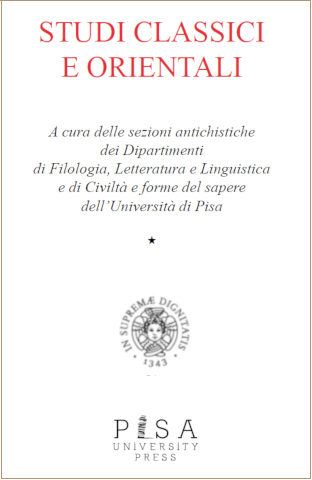Il canto delle Sirene e il canto di Neša. Semantica dell’unire e sfera verbale nel mondo indoeuropeo
Abstract
Sirens’ song and Neša’s song. The semantics of unite and verbal sphere in the Indoeuropean world.This paper sets out to look at the Sirens and how they are considered in the Mycenaean world: as hybrids, they represent positive values but in the Ancient Greek world they are ambivalent. Sirens are actually liminal, deadly figures who are able to link together those dimensions which would otherwise be divided, separated by the hiatus of incomprehensions such as life-death, sanity-folly, horizontality-verticality. Considering these dynameis to be syncretic, amongst the various other etymological hypotheses we favour the etymological option which is the one that formulates the Sirens’ dependency on the basis of *seh2-/sh2- , ‘to link, unite’. We then consider the Hittite song of Neša in which an intersection of the semantics of unite with the verbal sphere can be found. Thus we look at the meanings of οἴμη, οἶμος and isḫamai, which are lexemes that may potentially be traced back to the root *seh2-/sh2-. Finally, we look to the Vedic to comprehend an analogous presence in the Indian world of the semantics of unite.In the light of the evidence from Greek, Hittite and Vedic, we propose that the association of the semantics of unite in relation to the verbal sphere in a more global sense, is of Indoeuropean origin.
Pubblicato
2018-08-06
Fascicolo
Sezione
Articoli


